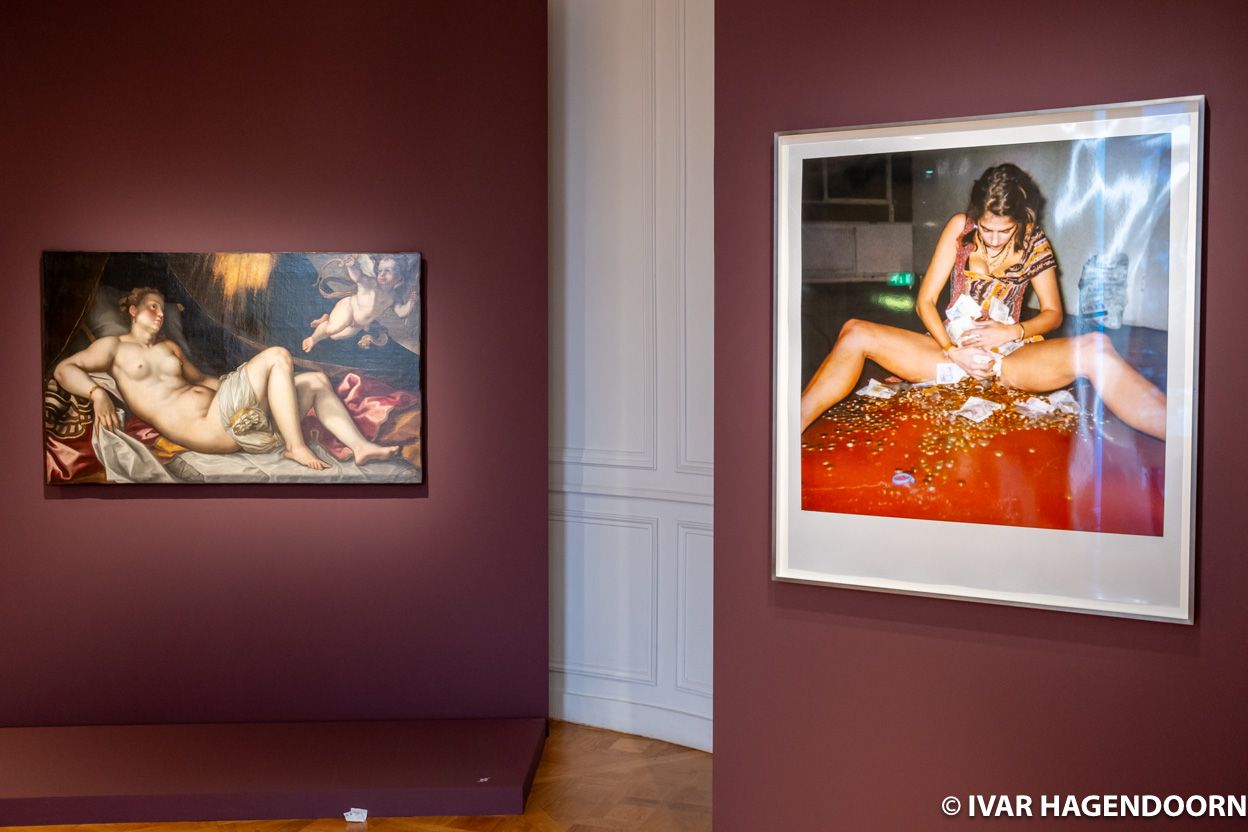
"L’Argent dans l’Art" (Money in Art) at La Monnaie de Paris is a fascinating exhibition that explores the relationship between art and money from antiquity to the present day. It is the kind of exhibition that can only be organized in Paris, with loans from the collections of the Louvre, the Musée d’Orsay and the Centre Pompidou and enhanced by loans from other French museums and private collections. The richly documented exhibition brings together more than 200 items, ranging from coins from the museum’s own collection to paintings, installations, photographs, sculptures and videos and including works by Edgar Degas, Auguste Renoir, Andy Warhol, Marcel Duchamp, Joseph Beuys, Marcel Broodthaers, Damien Hirst and Tracey Emin.
The exhibition raises important questions about the value of art and the art market, but it also aims to provide a broader understanding of the concept of money that goes beyond its function as a means of economic exchange. The exhibition is chronologically organized and divided into six sections: "Myths and origins of money"; "Morality and money professions" (money changers, tax collectors, loan sharks, etc.); "Artistic revolution and financial capitalism"; "What does the artist sell?"; "Capital: Je t’aime moi non plus" and "Art and money: between flow and data".
The exhibition opens with a number of banknotes that artists have defaced by using it as a canvas, thereby increasing their value. The next room provides an excellent overview of the various themes that the exhibition explores, with an installation by Damien Hirst from his "Treasures from the Wreck of the Unbelievable" (2017) series, a work by Anne and Patrick Poirier entitled "Fragility" (2001), which consists of shredded French franc notes from before the conversion to the euro, a paper shopping bag by Barbara Kruger with the text “I Shop Therefore I Am” and an installation by Hans Haacke, "The Business Behind Art Knows The Art Of The Koch Brothers" (2014).
The chronological journey then begins with a number of representations of the myth of Danaë, from a large vase dating back to 430 BC to a 16th century painting and a 19th century sculpture. These works are juxtaposed with two contemporary works by Tracey Emin, one of which shows her hoarding coins and bills between her spread legs.
The exhibition then moves on to the representation of money. The Bible, of course, contains many direct references to money, from the worship of the golden calf in the Old Testament to Jesus chasing the moneychangers and the merchants out of the temple. The morality implicit in many biblical tales lives on in the representation of greed, avarice, tax collectors and gold weighers in 16th and 17th century paintings.
The 19th century marked a turning point in the representation of money with the emergence of financial capitalism, represented here in the form of a painting by Edgar Degas, himself the son of a banker, "Portraits at the Stock Exchange" (1878-79) and a painting by Albert Maignan, "Fortune passes" (1895), which shows an ephemeral image of Fortune on the steps of the stock exchange. The 19th century, of course, also saw a radical transformation of art itself, with the rise of modernism in its various forms. This went hand in hand with a transformation of the market for art. With the demise of the criteria of academic painting the value of art was now in the eye of the beholder and works of art became objects of speculation.
The first half of the exhibition occupies the beautiful historical rooms on the building’s first floor, which also offer amazing views over the Seine (the Monnaie de Paris is situated on the Left Bank, between the Pont Neuf and the Pont des Arts). The second half of the exhibition, devoted to the 20th century, occupies the contemporary galleries on the building's ground floor.
In the 20th century many artists felt inclined to position themselves in relation to the art market. Some artists, such as Salvador Dali, nicknamed Avida Dollars by fellow artist André Breton, and Andy Warhol and later Jeff Koons and Damien Hirst, embraced the art market, others, such as Marcel Duchamp, Joseph Beuys, Arman, Orlan and Ben were deeply critical of the role of money in art and capitalism in general. The exhibition provides a fascinating survey of both poles and the various positions in between by way of a large number of artworks.
The exhibition ends appropriately with a room exploring the stock market, cryptocurrencies and NFT’s, including an animated video by Jon Rafman, "Got Rekt!" (2022), in which a man gets caught in a cryptocurrency nightmare.
The exhibition is accompanied by a beautiful catalogue, which can also be read and enjoyed in its own right (the main texts have been translated into English).
When I later looked at the flyer that I’d been given at the ticket office I realized that I’d completely forgotten to visit the rest of the building, since admission is not only for the exhibition, but for the entire historical building.
L’Argent dans l’Art is at La Monnaie de Paris until 24 September 2023.
Links
Years ago I won an award for a project that was inspired by the hand signals of floor traders. The project also used various other imagery inspired by the world of finance. Unfortunately it was developed in Flash and I've had to take it down.